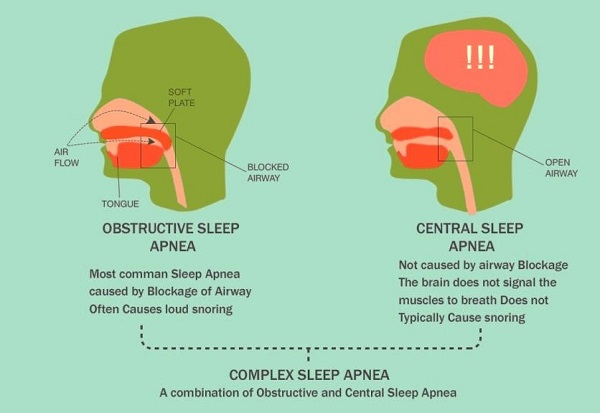This page details Sleep Apnea Causes and Treatments. Sleep apnea is a sleep disorder characterized by pauses in breathing during sleep. The pauses can last several seconds to minutes and occur up to 30 times or more an hour.
Causes:
The most common cause of sleep apnea is a blocked airway caused by the collapse of the throat muscles during sleep. Other physical abnormalities, such as obesity, enlarged tonsils, enlarged tongue, a deviated septum, or other conditions, can also cause this.
Other causes of sleep apnea include certain medications, alcohol and drug use, and medical conditions such as congestive heart failure and stroke.
Treatments:
The most common treatments for sleep apnea include lifestyle changes, such as losing weight and avoiding alcohol and drug use.
Continuous Positive Airway Pressure (CPAP) machines are also used to treat sleep apnea. They provide a steady stream of pressurized air that keeps the airways open during sleep.
Surgery is another treatment option, which can involve removing excess tissue in the throat or enlarging the airway.
Sometimes, oral appliances hold the jaw or tongue forward to keep the airway open.

Health Issues Caused by Sleep Apnea
- High Blood Pressure: Sleep apnea is associated with an increased risk of high blood pressure and even stroke.
- Heart Disease: Untreated sleep apnea can increase the risk of coronary artery disease, heart attack, irregular heartbeat, and even heart failure.
- Diabetes: Studies have shown that people with sleep apnea are more likely to develop diabetes due to the disruption of their sleep cycles.
- Depression: People with sleep apnea are more prone to depression due to the fatigue caused by lack of sleep.
- Weight Gain: Sleep apnea can cause weight gain due to disrupting sleep and metabolism.
- Memory Problems: Sleep apnea can cause memory problems due to the lack of sleep and the resulting fatigue.
- Headaches: Sleep apnea can cause headaches due to the lack of oxygen to the brain.
CPAP Machines
CPAP machines are medical equipment used to treat sleep apnea. They provide a steady stream of air pressure to the airway, helping to keep it open during sleep.
The air pressure is adjusted based on the user’s needs, and the machine has settings for different levels of sleep apnea.
CPAP machines help keep the airway open and may also provide humidification and other features to make sleeping more comfortable.
Obstructive Sleep Apnea
Obstructive sleep apnea (OSA) is a sleep disorder in which a person’s breathing is repeatedly interrupted during sleep.
It is caused by a blockage of the airway, usually when the soft tissue in the back of the throat collapses and closes during sleep. Symptoms of OSA include loud snoring, frequent pauses in breathing during sleep, excessive daytime sleepiness, and difficulty concentrating.
OSA can lead to serious health complications, such as high blood pressure, stroke, and heart failure.
Treatment for OSA includes lifestyle modifications, such as weight loss, avoiding alcohol, sleeping on one side, and using a Continuous Positive Airway Pressure (CPAP) machine to help keep the airway open during sleep.
Central Sleep Apnea
Central sleep apnea is a sleep disorder when your brain fails to signal correctly to the muscles that control your breathing.
It causes you to stop breathing for short periods during sleep, leading to problems like snoring, daytime sleepiness, and fatigue.
People with central sleep apnea may also experience headaches, dizziness, and irritability. Treatment options include lifestyle changes, such as sleeping on your side or avoiding alcohol and cigarettes, as well as using a CPAP machine or other breathing devices.
In some cases, medications and surgery may be needed to treat the underlying cause of the disorder.
